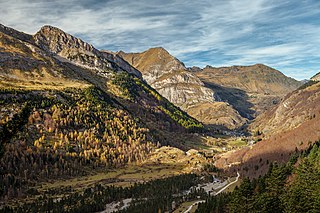What Adam Smith Ate: Basque Cabbage Soup
March 10, 2021

Born of the mountains and the border with the Basque region of Spain, Garbure is a hearty vegetable soup featuring beans and the confit duck legs of the Languedoc region, along with a good dose of Basque pepper spice, piment d’espelette.

Born of the mountains and the border with the Basque region of Spain, Garbure is a hearty vegetable soup featuring beans and the confit duck legs of the Languedoc region, along with a good dose of Basque pepper spice, piment d’espelette.
By the summer of 1765 in Toulouse, Smith was, well, bored. There were few activities and entertainments in the city, and most aristocrats had retired to country homes. Toulouse was France’s “second city” and a popular stop for scholars, students, and clerics on their Grand Tours. From his residence there, Smith received former students and well-known French scholars alike.
Scholars have had a difficult time retracing Smith’s exact steps from that summer. It’s clear he spent time in Bordeaux, the Mediterranean, and the Pyrenees, meeting the thinkers of the day. Introducing the young Henry Scott, Duke of Buccleuch to “great men” was part of Smith’s role on a Grand Tour.
At some point, possibly late July, Smith and the Duke traveled to Bordeaux. The city was expanding rapidly as a major trading point on the Atlantic, especially under the well-connected Duc de Richelieu. While there, Smith pursued his interest in the late French philosopher, scholar, and author of The Spirit of the Laws, Charles-Louis de Secondat, Baron de La Brède et de Montesquieu.
Smith had eulogized the thinker, known simply as Montesquieu, in 1756 in the Edinburgh Review. In addition to his famous political career, Montesquieu had a son in Bordeaux whose scholarly work was equally impressive.
Jean-Baptiste de Secondat had not only helped his father finish The Spirit of the Laws, but he was known for his scientific experiments in the Pyrenees, climbing the Pic du Midi in 1743 to confirm the Englishman Fahrenheit’s findings about pressure and temperature. As a wine grower, he was also responsible for the then-nascent field of agronomy and would later become a scholar in the field of economics.
By 1764, Jean-Baptiste was spending his summers high in the mountains of the Pyrenees, based in the town of Bagnères-de-Bigorre. So, Smith and the Duke set out. The young Duke, nearly 18 years old, wealthy, and by all accounts quite a catch, was interested in a lady, who would also be in the resort town, famous for its thermal springs.
Those who made the trek to Bagnères-de-Bigorre to “take the cure” generally stayed for the summer. Walking on the promenade was the primary social activity as walkers met friends and visitors. And, of course, there was the food. One can imagine that some patients had been advised to eat less meat and avoid the heavy food popular with the French aristocracy.
It’s nearly certain Smith and the Duke would have encountered one of the region’s most popular dishes – garbure. Born of the mountains and the border with the Basque region of Spain, this hearty vegetable soup features beans and the confit duck legs of the Languedoc along with a good dose of Basque pepper spice, piment d’espelette.
Enjoy this updated version adapted from Julia Child’s Mastering the Art of French Cooking. Knowing how little these recipes change, it might not be that different from what Smith would have enjoyed during his time in Bagnères-de-Bigorre.
Garbure – Basque cabbage soup
2 lbs Yukon Gold potatoes
2 lbs pork belly, sliced into 2-inch cubes
1 lb of smoked or country ham
1 large head of cabbage, roughly chopped
1 tsp piment d’espelette
½ cup parsley, chopped
1 bay leaf
1 tsp thyme
4 cloves of garlic, crushed
2 onions, chopped into large quarters
4 whole cloves
2 celery stalks, chopped
1 carrot, chopped
1 can Great Northern beans or 2 ½ cups cooked white beans
4 confit duck legs (optional)
Salt and cracked black pepper
- Place the potatoes and pork belly in a large soup pot with three quarts of water. Bring to a boil. Season with salt and pepper.
- Add the ham, cabbage, piment d’espelette, parsley, bay leaf, thyme, garlic, onion, cloves, celery, and carrot. Simmer for 1-2 hours, partially covered, until the pork belly is cooked. Remove the bay leaf. Skim off any fat from the top of the broth.
- Turn the heat to low. Add the beans and cook for another 15 minutes. Re-season as needed with salt, pepper, and piment d’espelette.
- Slice or shred each confit duck leg into large pieces. Just before serving, add the duck to the soup pot letting the heat from the soup warm it.
- Ladle the soup into bowls dividing the pork belly, ham, and duck among portions. Serves 8 as a hearty meal.
Read the previous What Adam Smith Ate posts:
- A Restaurant in Paris (Chicken friccasse)
- Dinner with Ben Franklin (Oyster Soup)
- Christmas Punch
- Voltaire and the Vegetarian Salad (Endive Stuffed with Goat Cheese, Pears, and Walnuts)
- In Which We Discuss Oats (Scottish Oatcakes)
- A Tribute to Strawberries (Simple Strawberry Jam)
- The Picnic (Smoked Trout Rillettes)
- The Tavern Supper (Chicken & Mushrooms)
- Scurvy, Tar Water, and Bone Broth (Bone Broth)
- Lingering in Languedoc (Sausage Lentils)